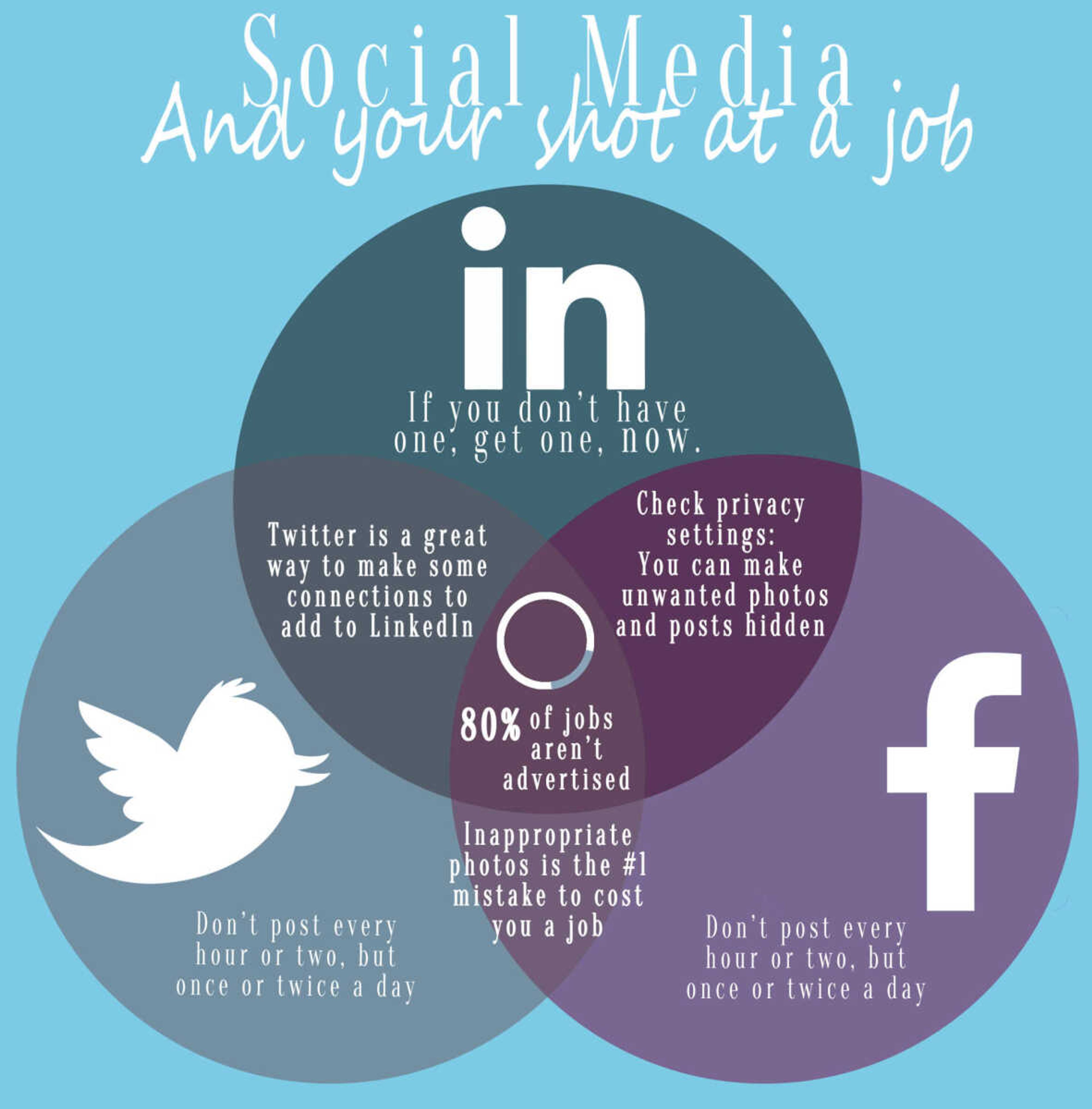Career Services at Southeast Missouri State University hosted a session on how social media can help students find jobs. The session, Endless Possibilities, was held Nov. 12 in the University Center's Indian Room. This was a separate event from the Career Thing, an event scheduled for the following day, which specifically focused on LinkedIn.
According to Kate Crawford, career counselor at Southeast and the session's presenter, 80 percent of jobs are not advertised. People searching for jobs on a website may end up looking for months and never see some of the best jobs available.
Networking is an essential part of the job search, but it can be hard to connect with employers if the one you want is far away from where you attend school. That is where social media is a boon.
"With social media, you can build your network of contacts with potential employers even if they are not in the area," Crawford said. "However, there are several mistakes that I've found that students make."
The presentation began with Crawford asking the audience what social media platforms they use. Out of an audience of 15 people, 14 of them had a Facebook page. Nine of the attendees had a Twitter account, but only one person had a LinkedIn page.
While there are a lot of social media sites, Crawford focused on three major sites that most employers look at. The three big ones are Facebook, Twitter and LinkedIn. Each of them has a different focus, but all of them have a role to play in the job hunt.
"Facebook is very personal and helps show what you are like outside of class and work," Crawford said. "Twitter is meant for short bursts of information but can be effective in keeping people up to date with what you are doing. LinkedIn is the big one. If you don't have a LinkedIn profile, you need to have one."
Crawford describes LinkedIn as a "living, breathing resume." It is like Facebook for professionals and is the page that employers will be most concerned with.
With this site, people can share their work experience, projects, education, awards and other professional merits. In addition to listing their achievements, people can also write about them in detail.
"With a regular resume, you don't have space to go into detail about what you have done, and employers do not know what actually happened," Crawford said. "LinkedIn, on the other hand, allows you to go into detail."
Crawford also talked about common mistakes that students make on their social media sites that make getting jobs harder. One of the biggest was posting inappropriate photos to Facebook or Twitter.
"It may have seemed OK at the time," Crawford said, "but that drunk photo you posted will not make a good impression on employers."
One way to avoid this is to set privacy settings on your accounts. For example, Facebook allows people to set privacy settings for individual posts, so they do not allow anything too personal to get out.
Another mistake comes in being friends with the wrong people. If a prospective employee were connected to someone with a dubious reputation, the employer may think that they may have had a bad influence and not consider interviewing them. Therefore, people need to be smart about who they have connections to.
"You should start with your family and friends," Crawford said. "They may know people who are looking for someone like you. You should also connect with professionals and organizations related to your field. But do not connect with everyone unless you know each other."
Another thing that students sometimes make mistakes on is how often they post on social media. While it is not good to post too little, some people make the mistake of posting all the time. As a result, they end up posting on inconsequential or irrelevant subjects.
"I would say that posting once or twice a day is enough," Crawford said, "instead of once or twice an hour. Let people know what you are doing but don't oversaturate your page. Post if you are working on a project or going to a conference or even just what you are doing that day."
There was time for questions afterward. One of the students asked what they should do if they have a page, but have not used it in a while.
Crawford said that it was easy to get back into social media. People should just go ahead and start posting again and they will be back on track.
"I'm glad I attended," Cody Campbell, student at Southeast, said. "I have a LinkedIn page but was not sure how to use it when I already have Facebook and Twitter. Now I have a better idea of what to do."




